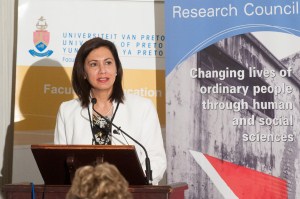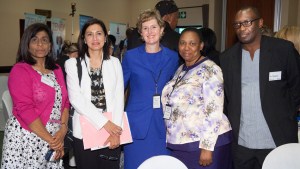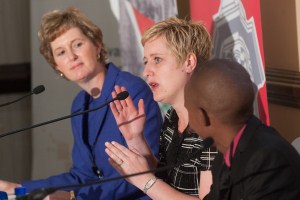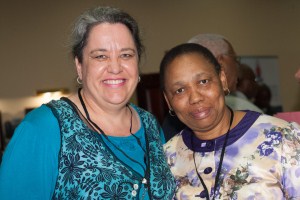Posted on December 13, 2012
This study (PIRLS 2011) is directed by the PIRLS International Study Centre at Boston College in the USA and is conducted under the auspices of the International Association for the Evaluation of Educational Achievement (IEA) from its headquarters in Amsterdam, the Netherlands.
PIRLS 2011 follows the 2006 South African study, which was the largest, most ambitious and complex national study ever undertaken within an international comparative study, with South Africa having the largest number of learners. In 2011, approximately 19 000 learners in Grades 4 and 5 in more than 430 schools across the country participated in PIRLS, and were tested in all 11 and 2 official languages respectively.
The research (PIRLS 2011) is designed to provide a comprehensive investigation into the reading literacy of South African learners, their levels of reading literacy and how these results can contribute to an improvement in the reading literacy of young children.
Prof Howie also mentioned that the objective of the PIRLS 2011 is to motivate the broader community both inside and outside the school to assist children in developing the foundation they need for reading skills.
“We hope that this empirical study, as with PIRLS 2006 with its extensive information, will serve as a vehicle for policymakers, curriculum planners, educators and educational researchers to improve reading literacy and answer crucial questions related to learners’ reading performance,” said Prof Howie.
During PIRLS 2011, 325 000 Grade 4 learners were tested internationally across 49 countries, with four countries testing Grade 6 learners and nine countries participating in benchmarking. Three countries took part in pre-PIRLS, a new study initiative.
The following findings were revealed by the PIRLS 2011 survey of the reading literacy of South African Grade 4 and 5 learners:
As far as countries abroad are concerned, Grade 4 learners from Hong Kong Special Administrative Region the Russian Federation, Finland and Singapore, achieved the highest scores, thereby making them the top four achieving countries. South African learners at Grade 5 level tested in Afrikaans or English, achieved similar results to Grade 4 learners in Indonesia and Qatar, and to Grade 6 learners in Botswana, Kuwait and Morocco.They achieved substantially higher scores than Grade 4 learners in Oman and Morocco, who obtained the lowest scores in the study.
In South Africa, only 4% of Grade 5 learners reached the highest international benchmark compared to 8% of Grade 4 learners internationally. A major concern is that there are fewer learners at the top end of the scale attaining the highest benchmarks, when compared to 2006. The good news is that more learners at the bottom end of the scale are achieving the international benchmarks than was previously the case.
Pre-PIRLS represents a very significant new baseline study of reading literacy among Grade 4 learners in South African primary schools across all 11 languages. It also includes international comparative data and international benchmarks. The new baseline study, called pre-PIRLS is an easier, less demanding and shorter test than the “gold standard” set by PIRLS, and was conducted in South Africa, Botswana and Colombia.
PIRLS is designed to measure trends in achievement and to indicate growth or decline within a global context. The PIRLS study among Grade 5 learners in South Africa (which only included children tested in Afrikaans or English), is important for monitoring how children’s learning has progressed between 2006 and 2011.
Forty-three percent of South African Grade 5 learners failed to reach the lowest international benchmark, in contrast to five percent of Grade 4 learners internationally. This means that they have not yet mastered the basic reading skills required to access and retrieve information for reading comprehension purposes.
Twenty-nine percent of the Grade 4 learners who wrote pre-PIRLS, did not reach the lowest pre-PIRLS benchmark. Approximately 90% of Grade 4 learners tested in English or Afrikaans attained the lowest international benchmark, while between 24% and 57% of children writing in the nine official African languages did not achieve it. In particular, learners tested in Sepedi and Tshivenda achieved the lowest results, had the lowest percentage of learners reaching this international benchmark, and are considered to be at risk educationally.
In addition to the assessment of reading literacy, PIRLS also collects a considerable amount of information from parents or guardians and learners about the home environment and the child’s literacy development. Furthermore, information is gathered from teachers about teaching practices and learners in the classroom, their personal information, attitudes and beliefs. Information is also collected from school principals about the school environment and its surrounding community.
Presentation by Prof Sarah Howie
PIRLS 2011 Report

Prof Cheryl de la Rey, the Vice-Chancellor and Principal of the University of Pretoria (UP) making a welcoming address at the presentation of PIRLS 2011 Report .

From left to right: Dr Vijay Reddy, Executive Director for Education and Skills Development at Human Sciences Research Council (HSRC); Prof Cheryl de la Rey, UP's Vice-Chancellor and Principal; Prof Sarah Howie, Director for the Centre for Evaluation and Assessment at UP; Ms Angie Motshekga, Minister of Basic Education and Dr T. Masilela from the HSRC.

Dr Surette van Staden, (in the middle), Co-National Research Coordinator for PIRLS South Africa respond to a question following the presentation.

The Dean of Faculty of Education at UP, Prof Irma Eloff, shares a lighter moment with Minister Angie Motshekga.
Copyright © University of Pretoria 2025. All rights reserved.
Get Social With Us
Download the UP Mobile App